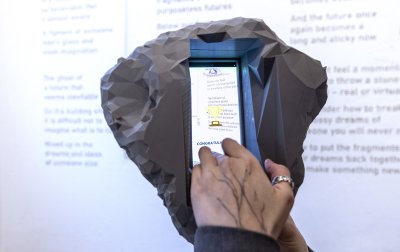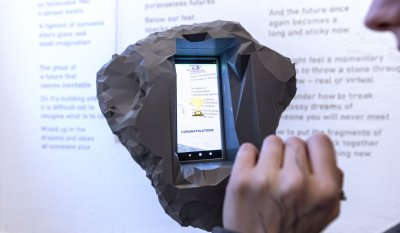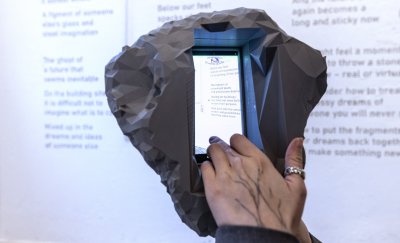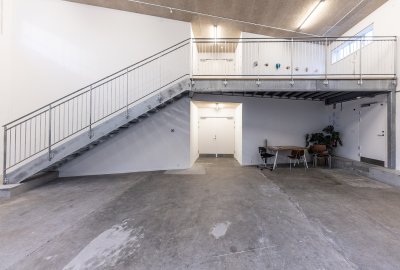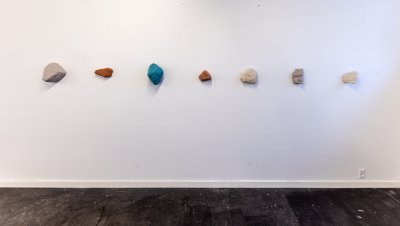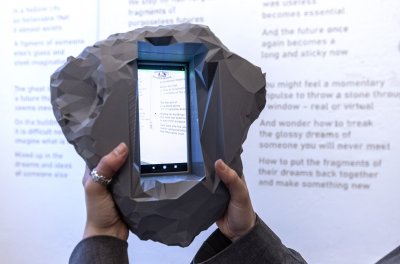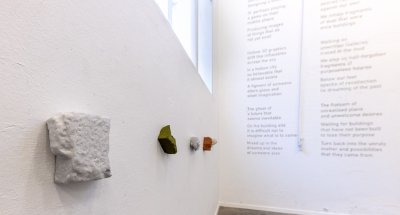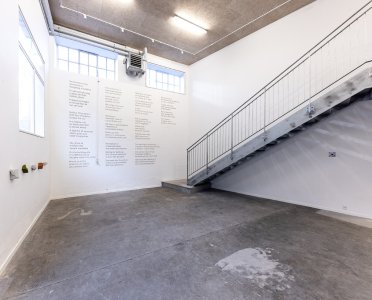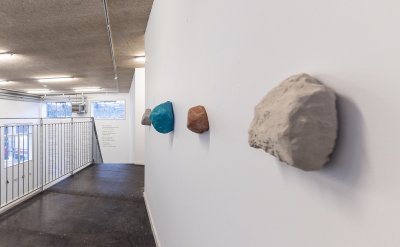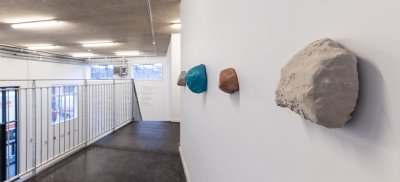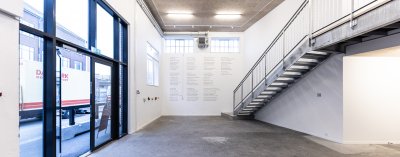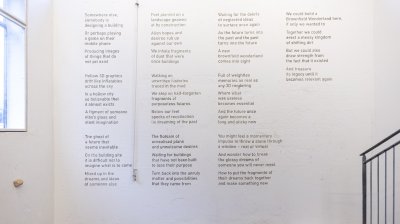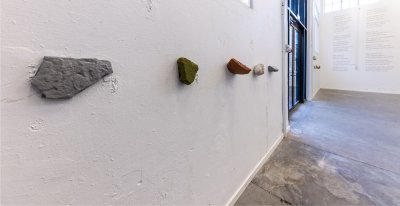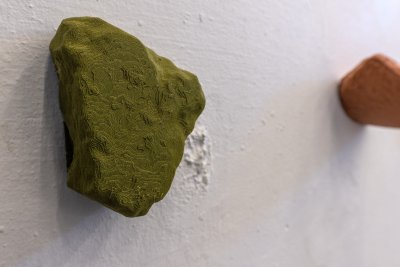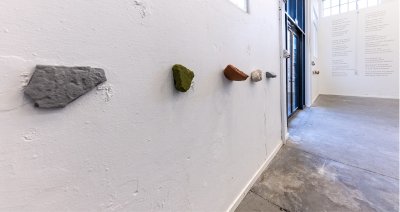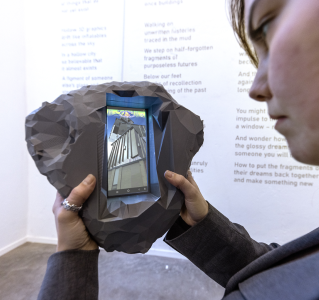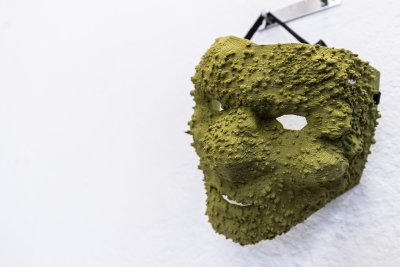Project Details
About
Brownfield Wonderland is a multi-platform art project at Spanien 19C in Aarhus, Denmark. It takes the current development of the site of the art space as its point of departure, arguing for the often-overlooked qualities and potential of brownfield sites like it. The project consists of 3d printed copies of fragments from the construction site surrounding the art space and text written with mud from the site as well as a downloadable Augmented Reality App where one can build one's own imaginary and weightless architecture. The 3d printed copies of fragments from the construction site have become a sort of digital “ghosts”. They have been 3d scanned, using the kind of technology one might find in one's smartphone, and subsequently 3d printed in monochrome versions using a variety of materials ranging from terracotta to granite. In their new form they remain recognisable both as having been a part of structures that no longer exist and as potential building blocks for future structures. These hollow approximations of the original fragments are half-remembered memories made tangible. Hollow but convincing memories of the potential of what was before, not unlike 3d architectural renderings whose apparent realism hides the hollow and malleable nature of 3d graphics. As one deciphers mud from the ground that has been smeared onto the wall in the shape of geometric letterforms, dust from the building site made up of particles that were once buildings enters one's lungs. The mud text is a site-specific text that has been made from the place where it has been written, even as it attempts to reimagine and remember this very place. The physical mud and the immateriality of the language it carries link imagined futures and pasts to the ongoing and tangible process of physical change happing right now at Spanien 19C, promising that things we take for given can be taken apart and put together in as yet unimagined ways. The Downloadable Augmented Reality App (available here: https://s.oerum.org/BW) allows one to build one's own messy and unregulated digital architectures, both on and off the building site around Spanien 19C. On the screen of a phone or tablet, one can arrange a combination of scaffolding, 3d scans from the site and architectural fragments into an unstable and intangible building mass. The app affords a glimpse of a city that flaunts its weightless hollow nature instead of hiding it, superimposing upon the physical reality of the building site the temporary digital ghost of a wonderland built on the messy and indeterminate qualities of the brownfield. A ghostly city that is no less real than the cities summoned forth in digital renderings by architects and planners to convince us of the future they are proposing. However, this an unsanctioned and unrealistic version of what could exist, made plausible but the authority of technology, not the dreams of bureaucracy.
Background
The artist-run space Spanien 19c used to be located in a messy and unregulated, but fairly central, part of the increasingly gentrified city of Aarhus. Until redevelopment started a few years ago, the area had somehow managed to escaped both commercial and municipal interest. However, following decades of “misuse”, the area is presently being integrated back into the rest of the city as a productive and commercially viable new part of town called “art city”. As the new neighbourhood emerges, the original post-industrial brownfield site is being broken down into its constituent parts and made into something new, with a few token fragments of its industrial history left as reminders of the qualities that it used to hold. Just as the industrial buildings were once repurposed by artists and others in search of imaginaries that the rest of the city did not offer, today this liminal area and its activities are being refashioned in the image of the surrounding city, according to municipal imaginaries. During this struggle of imaginaries Spanien 19C continues to function as an art space, wedged in between building sites of what is to come and fragments of what used to be. It is in this indeterminate time and space the Brownfield Wonderland exists as it attempts to reimagine the post-industrial brownfield. An urban planning term for any previously developed land that is not currently in use. The project puts forth an idea of the brownfield not as a void that needs filling, or something useless that needs a new function, but as a wonderland that is already full of qualities and things that could not exist elsewhere, thus realising that in the “useless” ruins of a past lies many other possible futures, not just the one that is being constructed at the moment. e taken apart and put together in as yet unimagined ways. At the moment the building site is a site of overlapping and contested imaginaries and Brownfield Wonderland is a celebration of this brief moment where two ideas of what a city is coexist. It is based on the belief that there is no inevitability to the current process of gentrification, it is simply one choice taken out of a million other possible ways we could develop our cities. While gentrification night favour one imagined future out of all the others that could have come about, the ongoing struggle of whose imaginaries will be realised, and whose will be kept as potential or unrealistic futures, remains. This Brownfield Wonderland might very well appear once again when this project is long forgotten, and current norms of what is useful and productive are forgotten. Leaving the site once again ready to become yet another kind of Brownfield Wonderland, where one might just be able to dream of something new, instead of more of the same.
